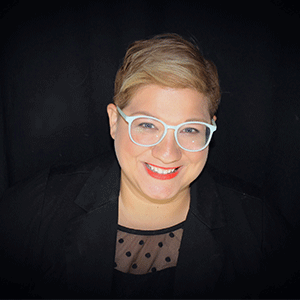
5 Steps to Digital Success
By Theresa Miulli, Career Education Consultant, T.M. Speaks
COVID-19 has sent the education sector into a tailspin, challenging hands-on technical programs to get online with a fervor not seen heretofore. While some of the career college sector has created hybrid programs, teaching select courses or partial courses online, most technical programs have been taught completely on campus, with little push to go online. Until now. This sudden disruption into how we do things may have many of you struggling to figure out what’s next. How do you bring a vocational program to the internet? How do we get curriculum online that has always been taught in person, and how do we do it within a few days’ time?
While this task is daunting and monstrous, it is achievable!
In this article, you will move through five steps to assist you in bringing your campus into the digital age.
As a Career college consultant, I have had numerous schools reach out in the past week, all seeking guidance on how to start this process. In these discussions, we have established an organized path to success, allowing some programs to get live within days. I am thrilled to share this path with you now, in hopes of helping each of you through this tough time.
1. First things first. Contact your accrediting body.
While it seems like the obvious first step, some small schools I have spoken to are truly at a loss as to where to even begin the process. Right now, both state accreditation and education accreditation are amending their former allowances to permit most programs to go digital. This is the time to lean greatly on your different oversight agencies, asking guidance and confirming temporary changes in standards, so that you are fully equipped with an understanding of how you may move forward.
2. Dissect your curriculum.
This is one of the hardest things for many of us to do. All too often schools subscribe to the “it is what we have always done,” style of school management, leaving little room for innovative disruption. In times like this, what we have always done will not work. Change may be scary, but as I hear often in my household, things worth doing tend to be scary. As you dissect your curriculum to go digital consider the following things:
A. Focus on theory lessons. This may seem obvious, but it is much easier to track theory work than it is laboratory work. Your team of professionals should come together to create new, exciting projects for students. Consider video presentations, unique research plans, student-driven webinars and web application assignments to inspire and teach your students.
B. Synchronous sessions. In today’s digital world, you can still connect with students daily, deliver theory conversations, and set expectations live. Using conference software such as Zoom, GoToMeeting and Skype, you can connect with students daily. This connection is vital to the retention of your student body during this difficult time.
C. Digital worksheets. Using Adobe Pro, you can create interactive worksheets for your students that require no printing. Making this transition as easy as possible for students is crucial to your success. Students (and probably teachers) likely don’t have a printer at home, so be sure not to require anything that needs to be printed. Instead, use the “Prepare Form” function on Adobe Pro to create fillable areas on your worksheets. Students can then open documents, fill them out through their device, and email them right back.
D. Give very specific instructions! When you move to digital learning, you take away the hour by hour (or sometimes minute by minute in our case) instruction to students. Because of this, you have to remove any guesswork that may remain for students. Your institution should create weekly, or even better daily, plans for the students so they know exactly what to do each day. This daily plan should be broken up into theory lesson assignments and practical assignments. Theory lessons should tell students exactly what pages to read, what projects to complete, and what worksheet to do. Practical assignments should be specific on what is to be performed. Finally, each daily sheet should state exactly what a student is to turn in that day, leaving no room for guessing or assumptions.
3. Determine how you will track your practical work.
This is where things get a little fuzzy, right? Ultimately, your accrediting body will have to give you some guidance here. However, there are some creative options to track practical work.
A. YouTube may become your best friend. One option here is to have students record themselves doing the practical work, upload the video to their YouTube channel, and sending instructors the link. The key here is that students will need to state their name, date, and time at the beginning of each video to verify new work. Videos could be done in time-lapse to keep them on the short side.
B. DropBox may be another option. Your school can set up a Dropbox account for uploaded work. While I don’t love the idea of requiring students to download yet another app, this could be a way to organize student files in one place rather than going to multiple YouTube pages.
C. Reconsider what practical work they should be focusing on. Have a Cosmetology program? Have them focus on styling, scalp treatments, and basic chemical services that can be done with conditioner. Have a massage program? Focus on theory, but build interactive lessons for students using MindTap, video, and live sessions. Perhaps consider chair massage techniques through synchronous sessions.
D. Synchronous demo and sessions. Just because you are not in the same room doesn’t mean the learning has to stop. Consider requiring students to join a conference session for a few hours a week. In this time, instructors can do a demo, followed by students performing the technique at home, on video. Video chat is an amazing thing, so let’s not forget to use it!
E. Consider services for hours. Your instructional team should be able to allocate appropriate hours per service for you. What do I mean by this? Well, a hairstyle should take a student approximately 30 minutes. So, to gain an hour of service, they must document two styles for said hour. Remember, always consider how you will justify the awarding of hours to your accrediting body. Create a standard so that it is consistent for every student in your program.
4. Synchronous sessions are a must!
I know I have mentioned it a few times now, but to keep students accountable, synchronous sessions will be necessary. Every synchronous session should have an agenda, reviewed by management. It is important that these meetings have a purpose, and that students understand that purpose. Whether you consider a homeroom model, using it for theory, or doing actual laboratory work this way, connecting to students live will be important in retaining the students through this time.
5. Consider your administration.
While we shift the curriculum into the digital world, we must not forget that administration must follow suit. What have you changed to continue enrolling students, while also having to keep track of student hours and grades? Here a few things you’ll need to consider:
A. Who is the keeper of the grades? For simplicity’s sake, one person should be assigned the job of entering grades into your student tracking system. You may want to set up FREE ONLINE GRADEBOOKS with ThinkWave so that you can ensure teachers are tracking grades daily. Each teacher can input grades on to the ThinkWave site, and one person can then transfer grades into your school’s Department of Education approved system.
B. Who is holding faculty accountable? New territory for almost everyone, online teaching is very different than in-person sessions. When a teacher is in your building, providing education, it is very easy to pop in a classroom, pull up a video, and follow up with deliverables. When working remotely, a certain level of trust must be in place, relying on teachers to carry out your mission without much oversight. Keep this in mind and build in accountability measures for your faculty.
C. How many faculty members do you need to employ? The big ugly questions during hard times like this, how many faculty members do you need to deliver online curriculum? While many of us strive to maintain a 1:15 or 1:20 ratio in our small classrooms, online teaching allows you to bump that ratio up to 1:30 or 1:40 easily. Teachers are no longer actively engaged 8 hours a day, and instead are doing period check-ins, answering emails, and holding shorter synchronous sessions. It is time to consider who your superstars are, and ultimately thin out your faculty to save on expense right now.
D. How will you track student hours? If you are in a clock hour program, you need to track hours and also be able to explain to your accreditors how you awarded said hours. Beauty, Spa and Wellness programs have free access to platforms such as LAB and MindTap from textbook vendors. These vendors have implemented time clock functions for your students. Some schools are doing virtual check-ins through Facebook, Zoom, or group chat rooms. Some schools are requiring students to remain live on their device to track participation. Ultimately, it is up to you, but you must remain consistent and verify each student has put in the time.
E. How will you save digital work? Compliance requires us to hold on to student information for at least five years. As an Education Specialist for one of the major accrediting bodies, I look to student files to verify that assessment and grading policies are upheld and consistent between students. I look for tests, service sheets, projects, and other methods of assessment. If a student progress report shows they have a project due, I go look for said project. So where are you storing these during a digital time? Dropbox? External drives? Just remember, education requires a paper trail (even if it is in digital form). Have a plan in place!
These five steps are sure to get you started towards delivering your technical program online. To better prepare you, I’ll suggest a few more things to assist in this transition. First, consider an online orientation for both students AND faculty. This orientation can be delivered through a webinar session and covers expectations, digital requirements to participate, and the introduction of new course materials. In addition, consider virtual admissions, so that your campus continues to grow during this time. Rolling admissions is much easier when on a digital platform, and you may find a new way to bring students in, even after the COVID-19 hysteria is over. Now that your online communication game is strong, consider virtual tutoring for students that struggle on their own. Using digital conferencing, teachers can meet with one or small groups of students for tutoring. Finally, don’t forget to train your teachers!
You cannot assume they know how to deliver information online and must be trained on how to adequately and effectively impact students through the computer.
Now is the time to invest in your faculty and ensure they have the tools they need to bring your school to digital success.
There is no doubt about it that schools are facing an unprecedented shift in pedagogy and education delivery. I believe it is pushing us to be better than ever and ultimately forcing schools to be innovative. Embrace this shift and you may soon see that the transition into online or hybrid technical courses will help both our students and schools reach new heights.
Serving as a consultant and speaker, Theresa Miulli has built a career developing programs, training teachers, and unifying teams throughout the country. With a license in Cosmetology, and a Master’s in Non-profit Management, Theresa is passionate about providing relevant, easy pathways for career college students in their mission for a new professional future. Currently earning her Doctorate in Higher Education, Theresa brings a unique perspective to academic management and curriculum development, blending her vocational school experiences with her traditional education. She is currently available for a variety of career college consulting services, centric to student success, faculty development, and curriculum review.
Contact Information:Theresa Miulli // Career Education Consultant and Keynote Speaker // T.M. Speaks // 239-292-6325 // tmspeaks@theresamiulli.com // www.theresamiulli.com // @theresamiulli on Linked-In and Facebook // @theresaspeaks on Instagram



